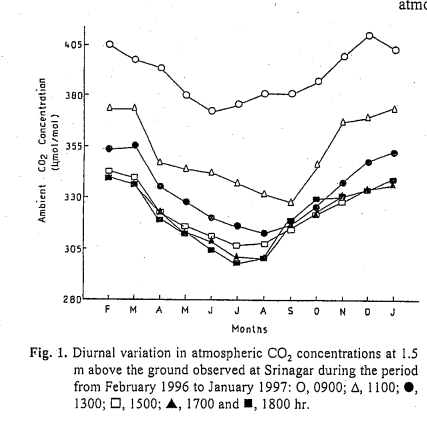I'd like to have a rough idea of how large local surface CO2 concentration vary due to natural processes.
For example, a purely hypothetical experiment:
If I set up some CO2 monitors in a wide variety of locations around the globe (e.g. mid-ocean, jungle, desert, plains, tundra, mountaintop, beach...), say at 2 meters off the ground, and took some measures to avoid close proximity to substantial anthropogenic CO2 sources (industrial, transportation, population, farms) and fires or episodic geological sources (e.g. volcanos or magma pockets under lakes per @jamesqf), roughly speaking what might the variation look like?
A starting guess might be that they'd all be nearly featureless, around 400ppm, with only say +/- 10 or 20 ppm daily and yearly oscillations. Of course there is a whole lot of important science within those variations, but for the purposes of this question, I'd call those variations small.
Would my detector in a forest or jungle see higher peaks, or deeper troughs than one in a desert, or mid-ocean? What might the biggest excursions be? Might it ever reach down to 300 or up to 500 ppm due to natural processes?
The reason I'm asking is that while I tried to so some searches, it is very popular to show data from urban and suburban locations, where peaks of 500 or 600 ppm or even higher are seen that are attributed to wind direction and concentrated man-made sources, and that variation is not what I'm after. Here is just one example (48 hours and yearly) but there are many much larger studies published with sensors in urban areas.
